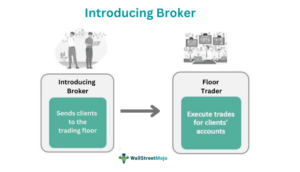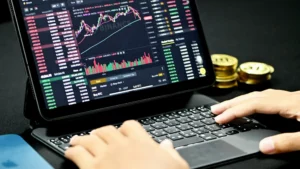When you operate $100,000, small price changes will result in significant gains. Still, remember that leverage raises not only potential profits but also multiplies losses. Exchanges are wholesale markets for currencies, stocks, commodities, and other assets.
Whether you choose the steadiness of spot trading or the dynamism of perpetual futures, ensure that your choice aligns with your goals, strengths, and risk tolerance. And in this ever-changing landscape, stay curious, stay informed, and most importantly, stay empowered. Perpetual futures traders often have a higher risk tolerance, What Is Spot Buying And Selling And How Do You Profit ready to stake more for potentially higher returns. If you’re comfortable with the idea that the market’s swings can work both for and against you, and you have strategies in place to mitigate losses, perpetual futures might be your calling. Perpetual futures traders are the adrenaline junkies of the trading world.
- For example, when the price of the currency pair GBP/USD moves 100 pips, that is only 1 cent.
- The amount of leverage that can be used varies across different exchanges and trading platforms.
- The main advantage of spot trading is you have complete control over your trades.
- (I know, it’s an irony, even though some brokers give you this service so you lose more money faster, they still charge you for it).
- With a short position, you agree to sell a certain amount of crypto — for example, one Bitcoin — at a certain date but have not bought it yet.
Trading cryptocurrencies using leverage is a high-risk, high-reward strategy that necessitates rigorous risk management and a thorough understanding of market dynamics. Experienced traders who feel comfortable taking on more risk in exchange for higher earnings should use this strategy. Trading the spot market means that you are trading the real market where you can buy an underlying asset and have ownership of that asset. For example, if you trade the spot stock market you essentially buy the real stock from the stockbroker and now you own a piece of the company.
Cryptocurrencies are invariably volatile and crypto trading also comes with its fair share of risks ranging from exchanges’ bank runs to hacks and attacks. At first glance, it seems that leverage trading is just for novice investors, but it has some nuances. It is clear that leveraged investment is in itself quite a risky undertaking.
It’s important for even experienced traders to continuously educate themselves on the complexities of leverage and stay updated on the market conditions to make informed decisions. Managing margin is crucial in leverage trading, as it determines the amount of money a trader can borrow. Traders must carefully monitor their positions and account balances to avoid margin calls and potential liquidation. While leverage trading can amplify profits, it also significantly increases the risk, so traders need to understand and manage their margin effectively. Ready to take your spot trading to the next level with a platform that’s as innovative as your trading strategy? Discover Morpher.com, where the fusion of blockchain technology and financial markets creates a trading experience like no other.
The true difference between the spot market and the margin market is the borrowed funds you receive from your broker while leverage trading. Usually, traders and investors will smaller accounts tend to lean towards leverage trading as they benefit from increased buying power. To explain, “HODLing” is the process of holding cryptocurrencies long-term in the hope they increase in value. Obviously, this is not guaranteed, but for blockchains with active use cases and strong communities, simply holding cryptocurrencies over a few years can be the best option. You can even track these holdings very effectively using a strategy called dollar cost averaging (DCA). Just like trading in traditional financial markets, cryptocurrency trading comes in many shapes and forms; and some are more risky than others.
Leverage is better for experienced investors who benefit from added purchasing power in good opportunities. Futures exchanges and options trading platforms are other ways for you to access these products and increase your buying power. Keep in mind though that some leveraged brokers will automatically add added buying power to your position size and the only way you control your risk is through the position size. Here’s an overview of the differences between spot and leverage trading. Apart from that, you can spot trade on all sorts of different platforms. Buying a crypto asset at its spot price uis possible using a centralized exchange (CEX), a decentralized exchange (DEX), or an over-the-counter (OTC) trade dealer.
The settlement date (sometimes referred to as the spot date) is when the assets involved in the transaction are actually transferred. For crypto, it is typically on the same day, but may vary across different exchanges or trading platforms. While much simpler than other techniques, spot trading is not completely risk-free. There’s really no alternative to learning and researching cryptocurrencies as extensively as possible.
As traders and investors, we’re often presented with a myriad of choices, each with its unique set of advantages, challenges, and intricacies. The debate between Spot and Perpetual Futures Trading is a testament to this diversity. Spot trading often requires a more substantial initial capital, especially if you’re eyeing significant profits. If you have a sizeable amount to invest and prefer a straightforward buy-and-hold strategy, spot trading beckons. Spot trading offers immediate access to markets, flexibility in trading volumes, transparency in price discovery, and diversification opportunities across various asset classes. In spot trading, buyers and sellers agree on a price, and the transaction is executed immediately.
Well, the only difference is that in spot trading, you realize your profit. Buying and selling assets on a spot exchange regularly, aiming to generate short to mid-term returns. In line with our commitment to responsible trading practices, WOO X has implemented a position limit to mitigate risk for our traders. For leverage exceeding 50x on BTC-PERP and ETH-PERP, the position limit will be set to 10,000 USDT. This precautionary measure ensures that traders can amplify their potential gains and protect them from excessive exposure.
Leverage involves borrowing a certain amount of the money needed to invest in something. Forex trading does offer high leverage in the sense that for an initial margin requirement, a trader can build up—and control—a huge amount of money. Monitoring total leverage amounts is important to assess the financial risk and stability of a company.
In this post, I will discuss the six key differences between futures and forex markets. Even if you do not trade these securities, it’s important to have some base understanding of these highly… A major difference between spot markets and futures markets is the concept of leverage. In general, any spot market involves the actual exchange of the underlying asset. For example, whenever someone goes to a bank to exchange currencies, that person is participating in the Forex spot market. As the largest market in the world, the foreign exchange spot market realizes about $1 trillion (USD) per day in transactions.
However, it’s important to note that leveraged trades can also magnify losses if the investment goes the other way, potentially resulting in a larger loss than the initial investment. Choosing between spot and futures trading depends on your trading objectives, risk tolerance, and trading style. Consider factors such as immediate access, flexibility, hedging needs, trade volumes, and leverage before deciding. Traditionally, spot trading relies on physical delivery, where the actual asset is transferred from the seller to the buyer. However, in many modern spot trading markets, settlement occurs electronically, with cash or book entries replacing physical delivery. Spot trading is typically conducted in over-the-counter (OTC) markets, which are decentralized and operate through a network of dealers and brokers.
The spot forex market operates 24 hours a day, enabling traders to capitalize on global economic events and news. Spot trading also fosters market efficiency by ensuring that prices accurately reflect supply and demand dynamics. The continuous buying and selling of assets in spot markets helps to establish fair market prices, as traders and investors react to new information and adjust their positions accordingly. Spot trading plays a vital role in providing liquidity to financial markets. It facilitates immediate access to assets and allows market participants to respond swiftly to changing market conditions or take advantage of short-term investment opportunities. The ability to buy or sell assets on the spot enables investors, traders, and businesses to manage risk, hedge their positions, and capitalize on price movements.






